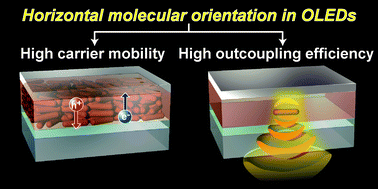Molecular orientation in small-molecule organic light-emitting diodes
Abstract
In research on small-molecule organic light-emitting diodes (OLEDs), the molecular orientation in vacuum-deposited amorphous films has been disregarded for around 20 years, and its effects on device performance have not been sufficiently discussed at the microscopic level. Only recently have the intermolecular interaction and subsequent horizontal molecular orientation in OLEDs been investigated and reported. In this article, an overview of the recent studies on molecular orientation in OLEDs is presented. The general properties of molecular orientation of OLED materials are shown, and its significant effects on the electrical and optical properties of devices are discussed to understand device physics and improve the future performance and reliability of OLEDs.


 Please wait while we load your content...
Please wait while we load your content...